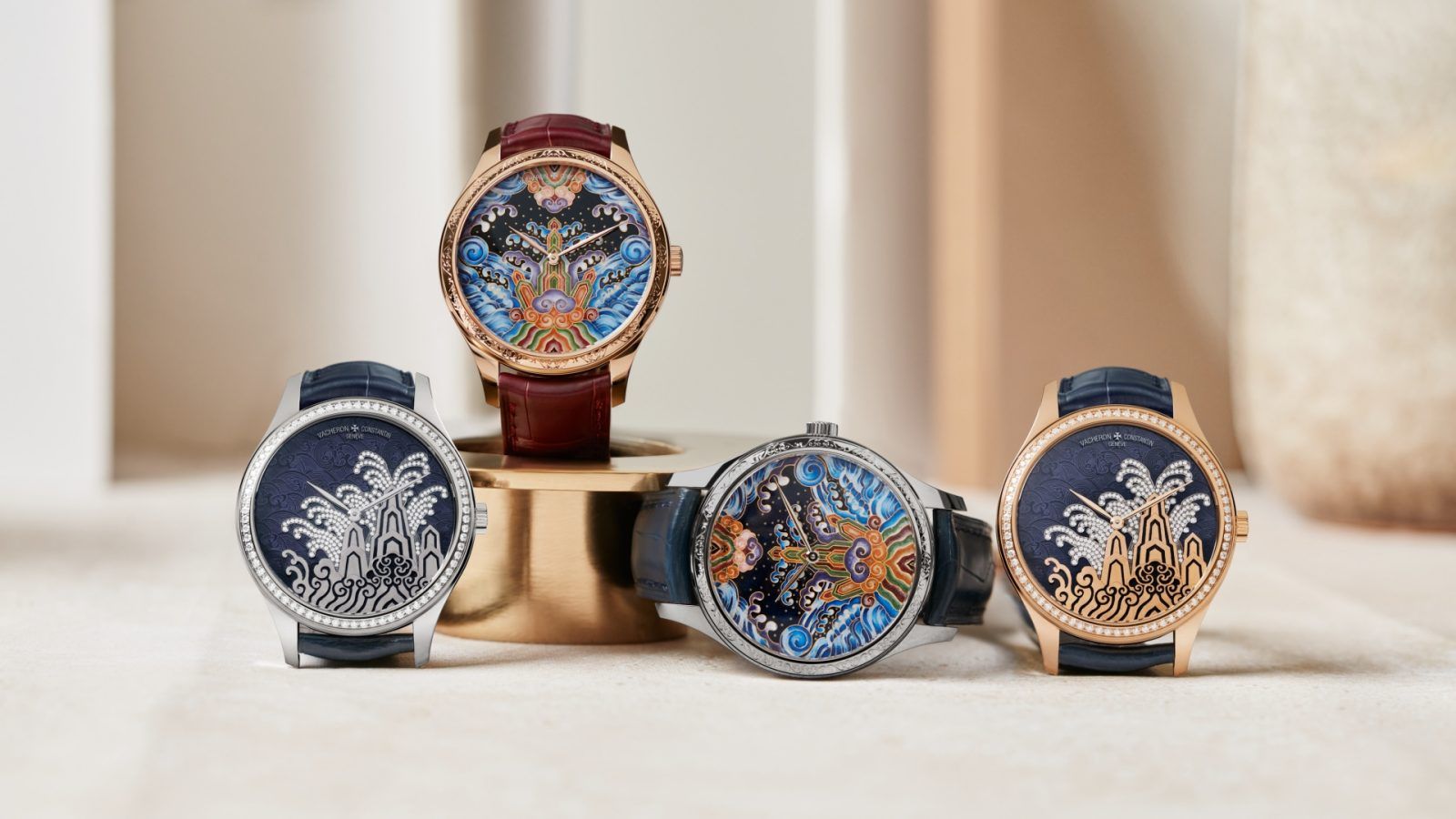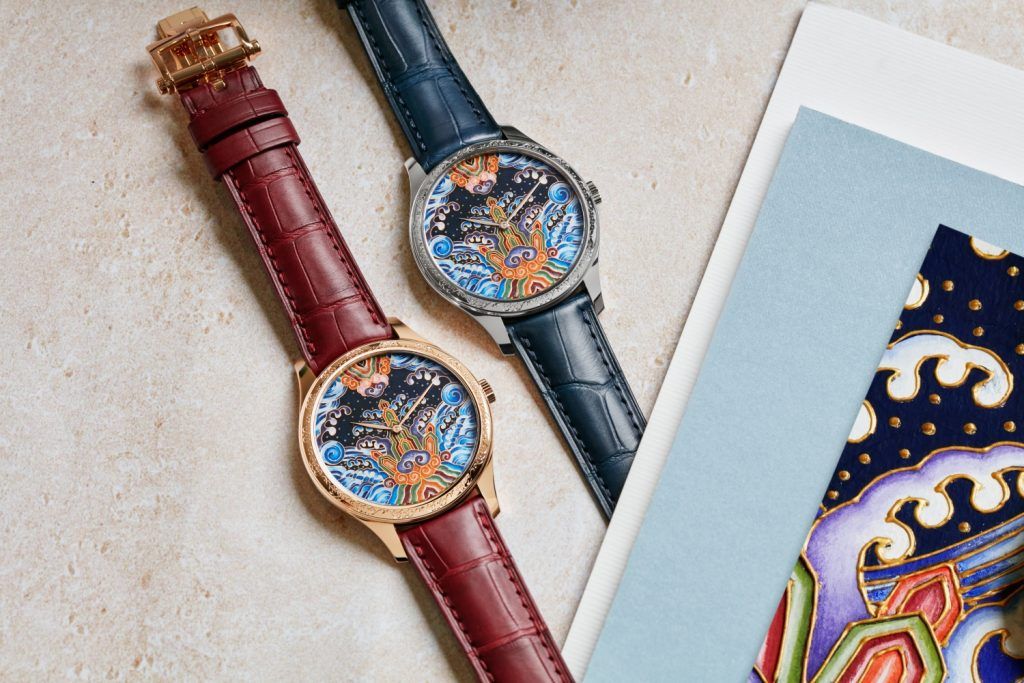Vacheron Constantin Pays Tribute to Chinese Symbols in New Metiers d’Art Watches


The newest Métiers d’Art Tribute to Traditional Symbols series from Vacheron Constantin is a quartet of watches inspired by the ancient Chinese “Seawater Cliff” motif.
Vacheron Constantin is no stranger to miniaturizing classical art on its dials. Its commitment to arts and culture is strong, and its finesse in the metiers d’art department even stronger. The Maison has demonstrated its ability to create bespoke watches inspired by the masterpieces within the Louvre in the past. Now, it’s extended its creativity to ancient Chinese culture, working in close collaboration with the Former Associate Research Librarian of the Palace Museum in Beijing’s Forbidden City, on a series of four limited-edition watches, with two dial designs.
There are a vast number of ancient Chinese cultural symbols, but for this special collection, Vacheron Constantin decided to interpret the “Seawater Cliff” motif, a decorative symbol that first appeared in the 14th century and is specific to the imperial court of the Ming and Qing dynasties. The symbol, which depicts a mountain towering above the tides as they surge against its cliffs, is omnipresent on court architecture, furniture and porcelain, as well as in Imperial clothes and ceremonial dragon robes.

Vacheron Constantin has always had an interest in exploring Chinese symbolism, and has released a number of watch dials to celebrate Chinese New Year in the past. But, according to Christian Salmoni, the brand’s Style and Heritage Director, “in the course of research, it became clear that the decoration of ancient imperial palaces and the court’s ceremonial robes offered some interesting avenues to explore”.
Mr Song, the former research and scholar at the Palace Museum in Beijing, and a specialist in Chinese symbolism, visited the manufacture to provide his insight to the team. “It was during these exchanges that the Seawater Cliff motif came to the fore,” says Salmoni. “Mr Song provided the necessary documentation and sound advice for the Maison to interpret this motif in two different ways. While each has its own character, they both share a common symbolism.”


The first of these dials, Eternal Flow, utilizes cloisonné enameling and engraving. Cloisonné enammelling is a technique that originated from China, with its heyday in the era of Emperor Jingtai in the Ming Dynasty. Here, 220 gold words are used to delineate the enameling fields to form the “Seawater Cliff” motif – this in itself is 50 hours of work – whereafter the enamel is then layered and fired in the kiln in successive layers to achieve its colour and intensity. The enameling work is then ringed with a bezel that is entirely hand-engraved with a bat motif – yet another Chinese motif that represents happiness and fortune.
The second dial design, named Moonlight Slivers, is a showcase of Vacheron Constantin’s Grand Feu enameling, engraving and gem-setting skills. The design is beautiful three-dimensional; in the background, the sea is depicted by deep-blue Grand Feu enamel that is painstaking engraved with tiny furrows that are then filled with white enamel to depict the waves. Then, lines of hand-set brilliant-cut diamonds are set on the dial to evoke the dynamic sea tides. Lastly, the mountain range is cut out in relief, using tone-on-tone champlevé enamel inlays to accentuate the depths of the landscape.







The four watches in the Métiers d’Art – Tribute to traditional symbols series is limited to 15 pieces only. Housed in a 38mm case in 18K pink or white gold and powered by the famous Calibre 2460, these dials are a beautiful expression of Chinese culture and indeed, these watches are no doubt, royally approved.